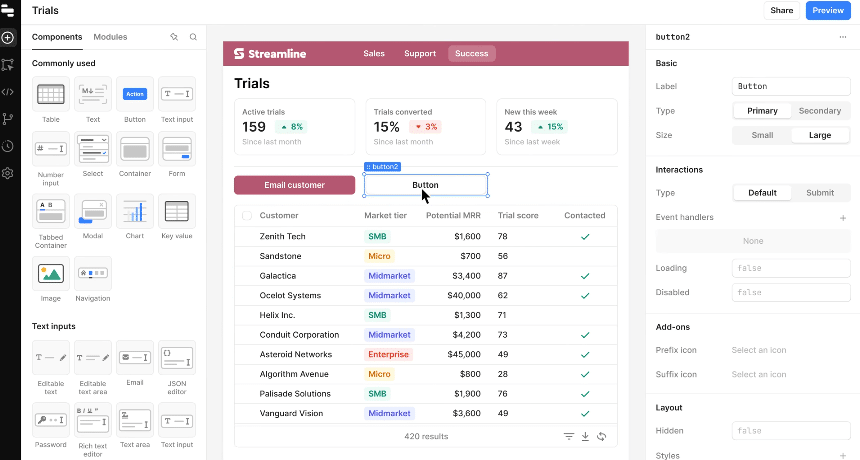September 1, 2024
We explained why Retool is special and why it's worth learning
It's not a secret; we use Retool a lot.

We believe it's something special because it's truly an enabler.
Retool is a software development platform for developers that want to quickly build internal tools, especially those needed to solve common business problems within companies.
However, like any tool, it has its strengths and limitations and isn't the right solution for every scenario.

Software development includes a broad range of tools, each created to address specific problems with varying levels of abstraction and user skill requirements. From low-level libraries to high-level platforms (up to no-code solutions), the tools developers choose are often a balance between accessibility (who can work with them), flexibility (how many things they can do), and output possibilities (how deeply they can customize).
Retool targets developers who build internal tools for businesses. These are often developers who are comfortable writing SQL queries and some JavaScript but may not want to or need to manage the underlying infrastructure (like software architecture, deployment, and scaling).
Retool excels in scenarios where businesses need custom software solutions fast. The platform is particularly strong in:
The idea of embedding small chunks of JavaScript code anywhere was indeed a game-changer, shifting paradigms in the way applications are developed. Historically, tools based solely on configuration had significant limitations; if the creators hadn't foreseen a particular need, users couldn't achieve it. This rigid approach often limited innovation and personalization.
In Retool developers can insert small bits of business logic directly into otherwise configuration-driven environments. This hybrid approach solves many customization needs without sacrificing the overall benefits of a highly configurable system. A Retool app typically requiring 80% configuration and 20% code to achieve the desired outcomes.
This combination is what makes modern application development both powerful and flexible, giving developers the ability to address unique business requirements efficiently while still leveraging the speed and simplicity of configuration-driven tools.
While Retool is powerful, it’s not the best solution for every problem. Scenarios that require highly customized user experiences, complex logic that goes beyond simple business operations, or where performance optimization is crucial, might find Retool limiting.
Retool's biggest strength lies in its ability to balance rapid development with sufficient customization for most internal business tools. For companies needing to build and iterate quickly, it’s often a superior choice to other platforms.
Furthermore, their team continuously delivers improvements at a fast pace; Retool’s capabilities keep expanding, making it an increasingly attractive option for developers working on internal tools.
These are some reasons you should give Retool a try. If you still have some doubts, contact us!